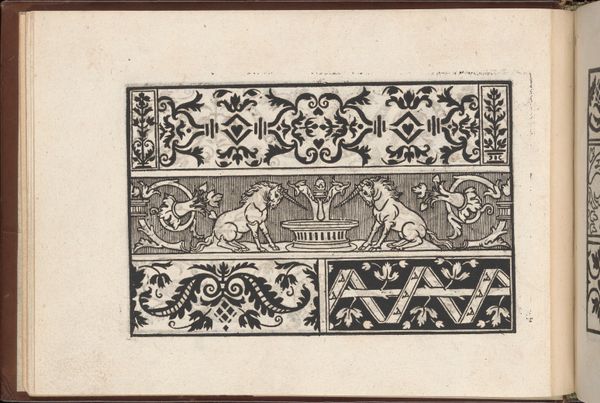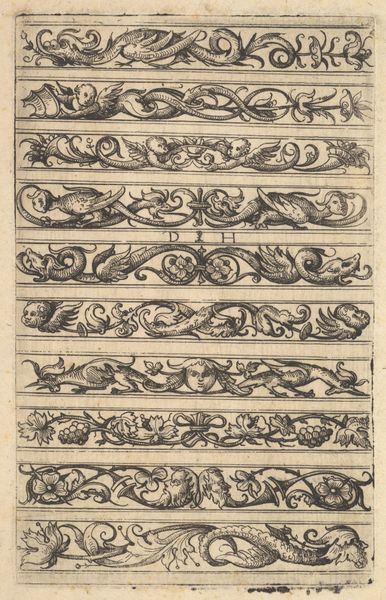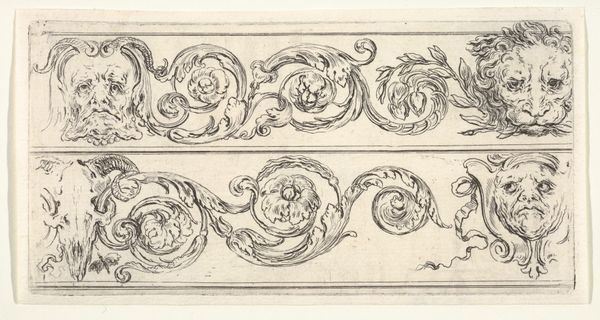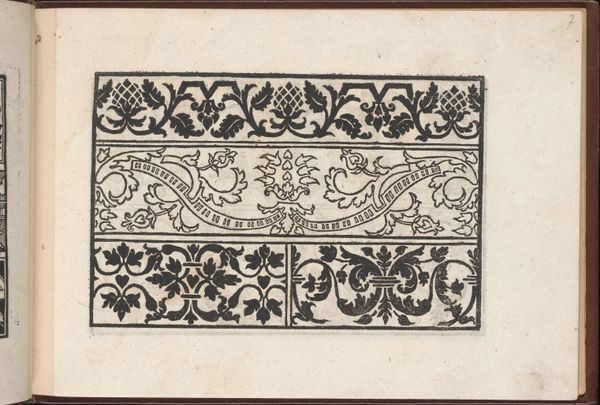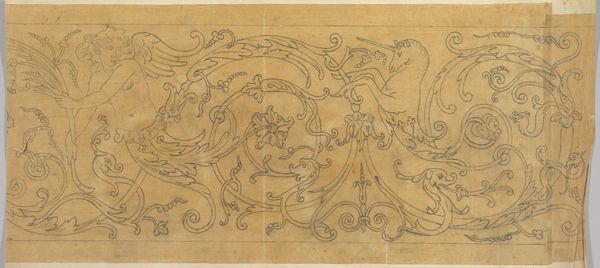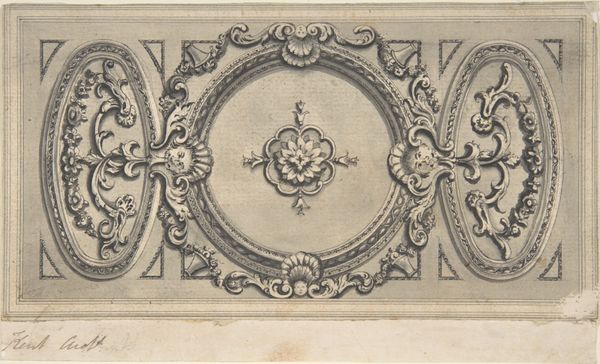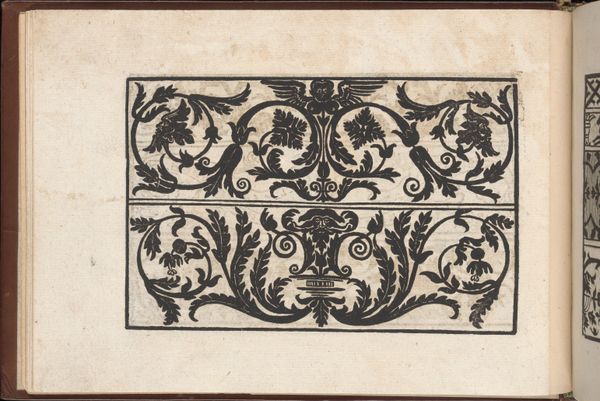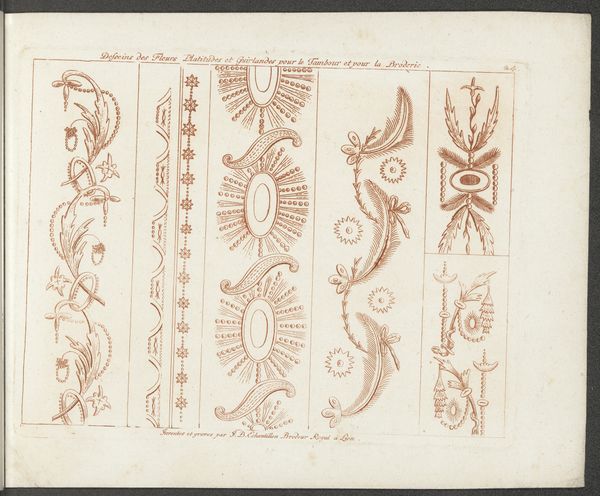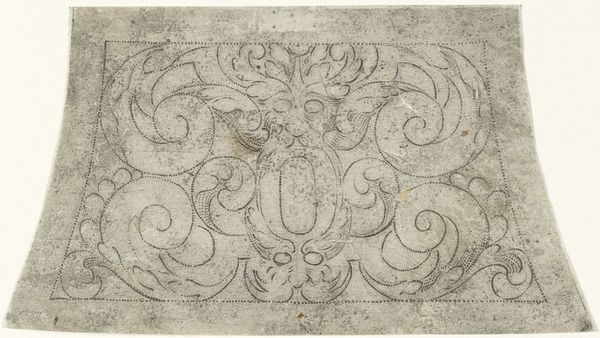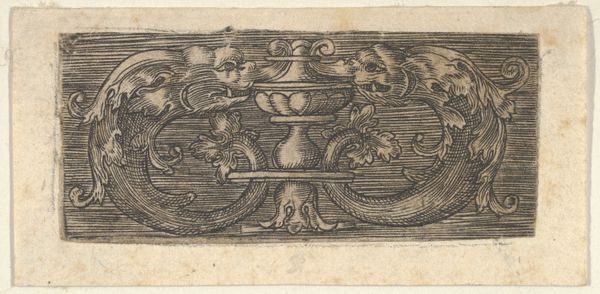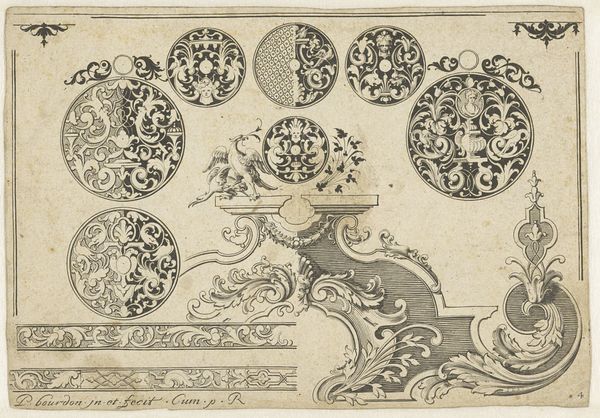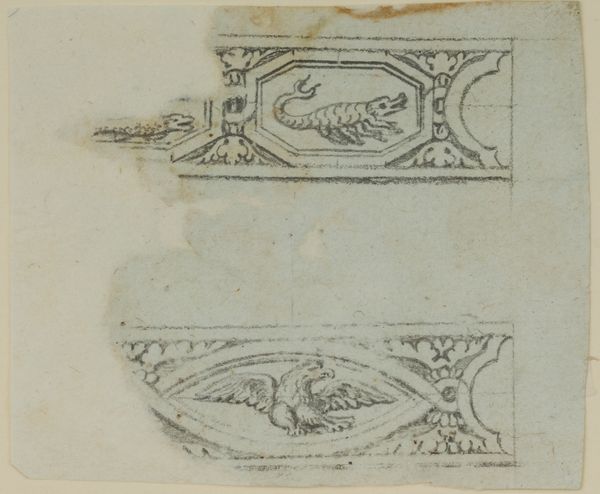
Copyright: Public Domain
Curator: Let’s turn our attention to this study. "Classical Study," a drawing done between 1776 and 1779 by Thomas Hardwick. It resides here at the Met. Editor: My first thought is "precision." The reddish chalk rendering against this stark background creates these almost tactile forms. There's such detail in these geometric renderings. What were these drawings originally intended for? Curator: This is, at its heart, a tradesman's technical drawing. The materiality suggests this piece was likely reproduced as prints for distribution among architectural craftsmen for replication in new projects, or for use in conservation. Note how the drawing centers on architectural decoration; it speaks to Hardwick’s training, steeped in observation of the antique in Rome and, eventually, the adoption of architectural realism back in England. Editor: It's fascinating to think about the cultural lineage embedded here. These motifs are not simply decorative; they are a visual language carrying messages from the Roman world onward. Shells and flowers recur here repeatedly. To what did the shell allude? Curator: We have to remember that drawing production was vital for disseminating ideas about neoclassical forms as it connected knowledge production, material practice, and architectural design. Its social and cultural roles are all interconnected and it speaks volumes about the modes of making back then. What these drawings accomplish are more meaningful when seen as a form of material culture. Editor: I appreciate the social and architectural design contexts; it is so important to study images not as isolated artistic products but as conduits of shared cultural meaning. The shells represent rebirth and pilgrimage; Hardwick evokes a historical dialogue through visual repetition. It reminds the audience of classical virtues by alluding to Venus, goddess of beauty, from which the shell motif stems. The artwork transcends time. Curator: Agreed. Examining Hardwick's process alongside the dissemination of these designs into material practice emphasizes the value of this piece as something beyond mere aesthetic form. Editor: By bringing these analytical approaches together, we're able to perceive the layered meanings and the enduring symbolic resonance of this "Classical Study." Curator: Absolutely, seeing it in that broader context highlights its importance and functionality within artistic creation and craft practice in 18th century England.
Comments
No comments
Be the first to comment and join the conversation on the ultimate creative platform.
